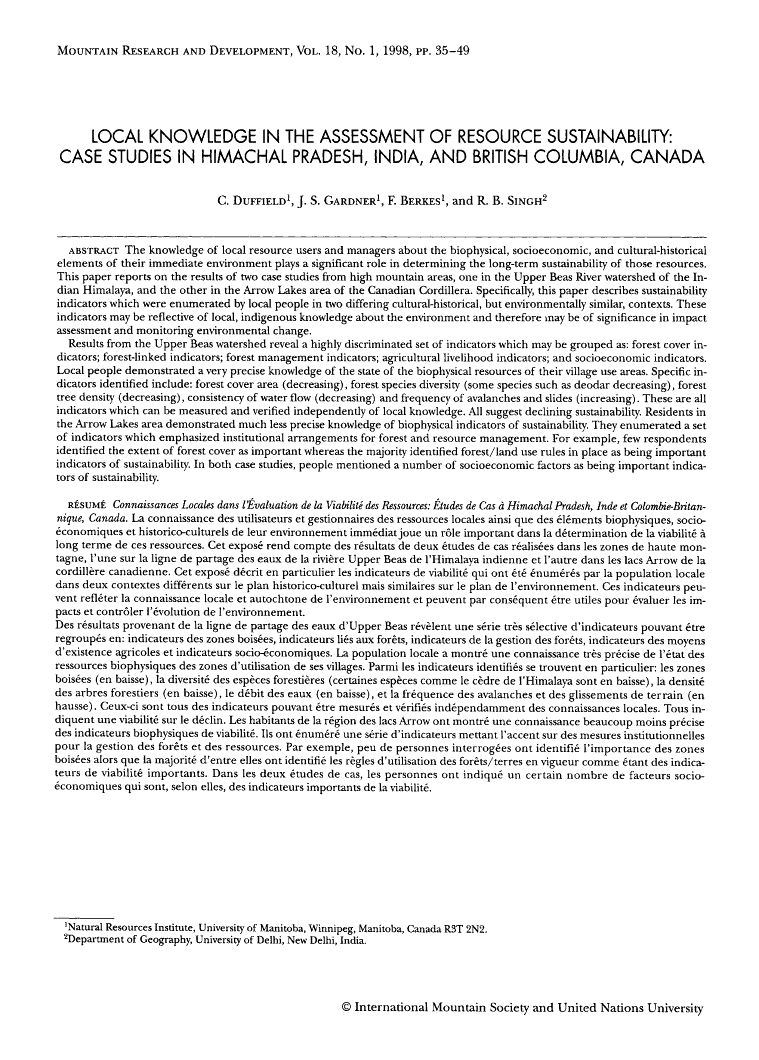
The knowledge of local resource users and managers about the biophysical, socioeconomic, and cultural-historical elements of their immediate environment plays a significant role in determining the long-term sustainability of those resources. This paper reports on the results of two case studies from high mountain areas, one in the Upper Beas River watershed of the Indian Himalaya, and the other in the Arrow Lakes area of the Canadian Cordillera. Specifically, this paper describes sustainability indicators which were enumerated by local people in two differing cultural-historical, but environmentally similar, contexts. These indicators may be reflective of local, indigenous knowledge about the environment and therefore may be of significance in impact assessment and monitoring environmental change. Results from the Upper Beas watershed reveal a highly discriminated set of indicators which may be grouped as: forest cover indicators; forest-linked indicators; forest management indicators; agricultural livelihood indicators; and socioeconomic indicators. Local people demonstrated a very precise knowledge of the state of the biophysical resources of their village use areas. Specific indicators identified include: forest cover area (decreasing), forest species diversity (some species such as deodar decreasing), forest tree density (decreasing), consistency of water flow (decreasing) and frequency of avalanches and slides (increasing). These are all indicators which can be measured and verified independently of local knowledge. All suggest declining sustainability. Residents in the Arrow Lakes area demonstrated much less precise knowledge of biophysical indicators of sustainability. They enumerated a set of indicators which emphasized institutional arrangements for forest and resource management. For example, few respondents identified the extent of forest cover as important whereas the majority identified forest/land use rules in place as being important indicators of sustainability. In both case studies, people mentioned a number of socioeconomic factors as being important indicators of sustainability.